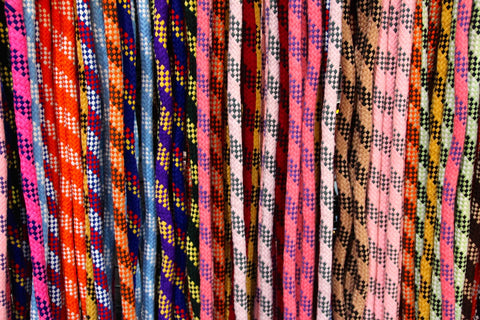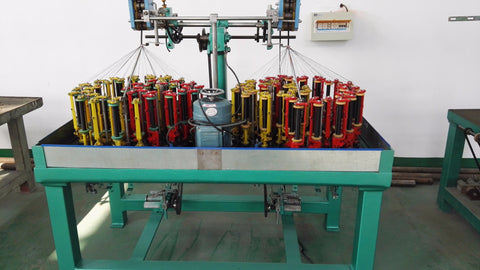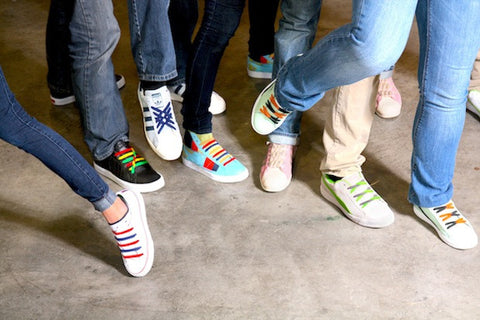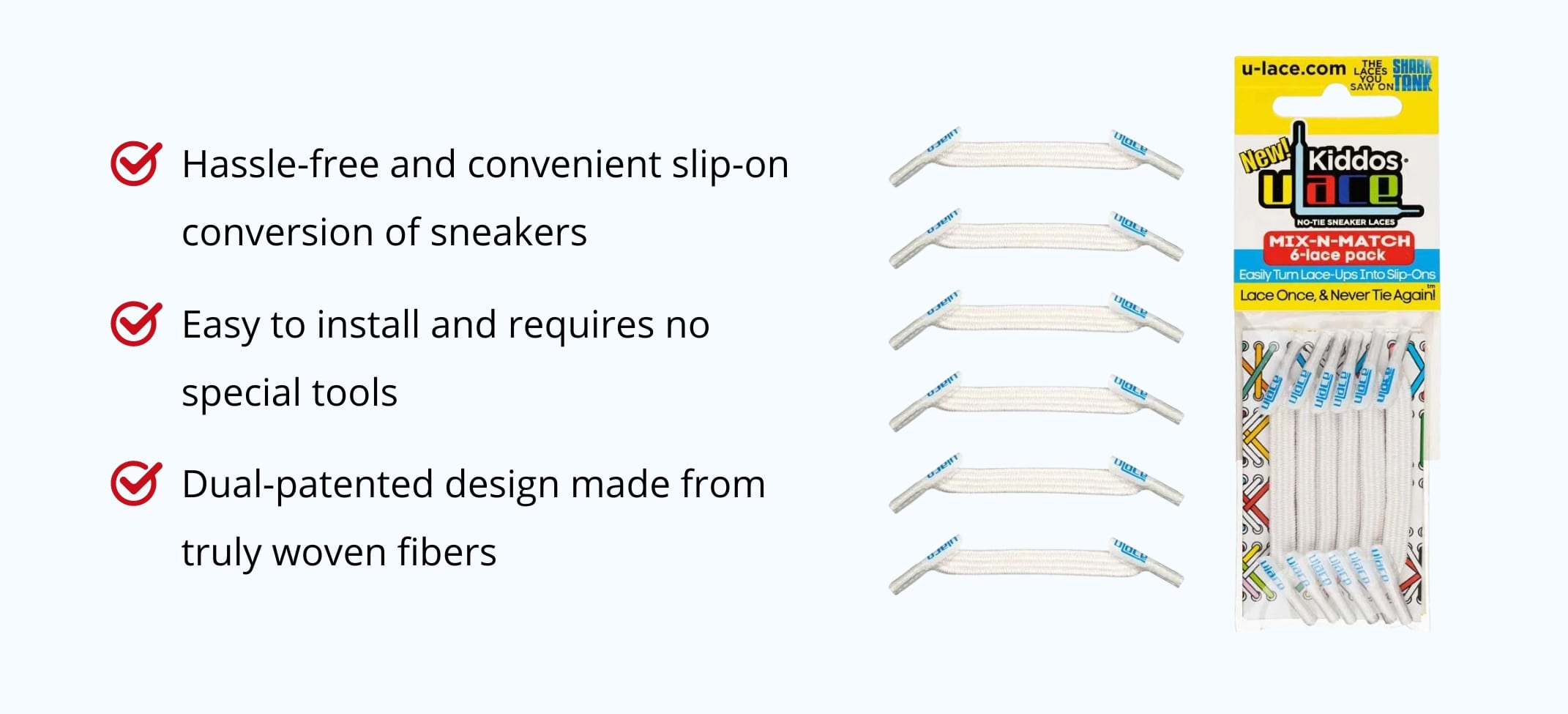10 Facts About Shoelaces That Will Blow Your Mind
10 Facts About Shoelaces That Will Blow Your Mind
Shoelaces are not only fun, they’re super weird! So naturally, we decided to create a post on ten of the strangest true-life facts about shoelaces we’ve ever come across in the shoelace business.

Once upon a time if you had asked me what an aglet was, I would have said – a type of baby duck, or maybe a mysterious legal term you never really know the meaning behind. But, turns out an aglet is actually that little plastic or metal bit on the end of a shoelace.
That means hundreds of years ago, someone was irritated enough with the frayed ends of their shoelaces to revolutionize the industry forever. It still blows my mind, and even though this isn’t the strangest fact on this list - it is something you should know. So there!
The rest of this post will chat about 10 of the most brain busting facts we’ve ever discovered about shoelaces. By the end, you’ll see why they are way cooler than you ever dreamed possible.
#1: Shoelaces Are Very Old
Many historians claim that rope came before string shoelaces, which goes back 28,000 years, but the question of who invented shoelaces is a widely debated topic. Regardless of who invented shoelaces, laces have been around for a very long time, and we think they were originally just rope shoelaces. As long as there have been shoes, there has been a need to tie the shoes to feet.
#2: Shoelaces Made You a Mockery
Some shoelace history for you here, in ancient Rome and Greece it was customary to ridicule people that tied their shoes on badly. This is because these cultures absolutely hated carelessness in appearance and believed it said something about the individual.
#3: Shoelaces Proved Your Wealth
One of my favorite shoelace facts takes place in the Elizabethan era, when the shoes and shoelaces you wore told other people how wealthy you were. Strict class distinctions meant the rich wore buckled leather shoes with ribbon laces, while the working man wore rawhide laces in his shoes.

#4: The Shoelace Weaving Process is 200 Years Old
Once the industrial revolution had come about, and machines could weave fibers into stronger, better laces, a process was created to mass produce these braids. That shoelace braiding process is still largely identical to how it was 200 years ago. Only materials and colors have changed since then.
#5: Tom Cruise Doesn’t Call Them Aglets
This is one of those shoelace facts that doesn’t make much sense, but is still hilarious. If you come across someone calling an aglet a flugelbinder, it’s Tom Cruise’s fault. He popularized the made-up term in the movie “Cocktail” when talking about millionaire inventors.
#6: Shoelaces Were Once a Form of Communication
Well, technically they were knotted strings that the Inca’s used to send messages from city to city – but we like to think they were shoelaces. After all, isn’t a knotted string a shoelace? This was a great way to communicate back then, because the materials could be reused and resent.
#7: Shoelaces Are Nearly Always Unnecessarily Long
It’s true, shoelaces are a lot longer than they once used to be, and experts say that it’s because manufacturers make laces a standard length to fit every shoe they make. These shoelace facts are a case of one standard length reduces the cost, which means you’ll always have extra.
#8: The Granny Knot Wasn’t Named after Grandmothers
Some shoelace facts are stranger than fiction, like the story of the granny knot. If you’ve ever tied your shoelace bows vertically, then you’ve tied this knot. The granny knot is the reason shoes come untied, but it’s not named after an old woman – rather after the knot used to tie grain sacks closed.

#9: U-Laces Were the First Modular Elastic-Based No Tie Laces
In no tie shoelace history, U-Lace was the very first brand to manufacture and create our patented elastic no-tie laces. Once we launched, there were many, many copycats – but none that retained the classic style of our laces. We also introduced the idea of customizing lace design on your sneakers, something that is still popular in street culture and in high fashion.

#10: Different Shoes Need Different Laces
Not many people realize this, but different shoes work better and are more comfortable with certain kinds of laces and lacing patterns. Flat, soft laces are best for hiking for example, and will hurt you less than hard, round laces will because they push on your pressure points.
You should also research which lacing patterns will best suit your chosen activity, so that the fit of your shoe is accurate and geared for performance!
There you have it, 10 amazing facts about shoelaces! Now, if anyone ever tests your knowledge on sneaker culture, you can impress them with your incredible encyclopedic knowledge of shoelaces.
These facts about shoelaces are bound to be a hit at any party or gathering when the conversation has turned to what the weather is like outside. Feel free to interrupt your friends’ mid-story so that you can educate them about something we all own and wear every day.
Do you have a funny shoelace story? If you do, we’d love to hear it in the comments below. We’re cool like that!



